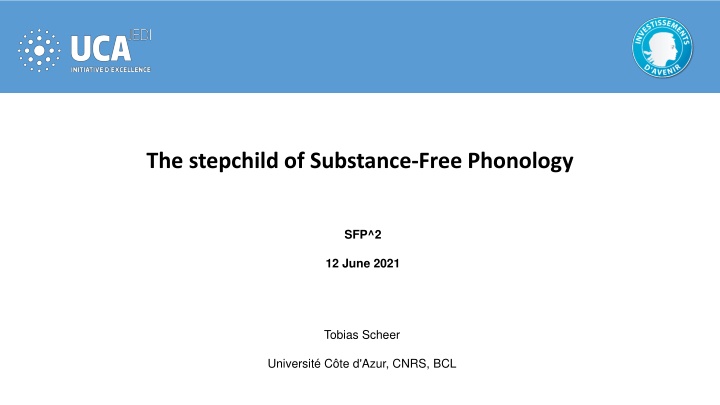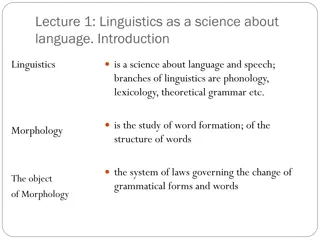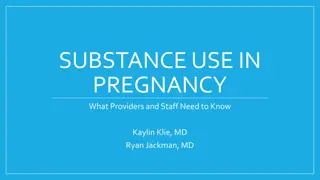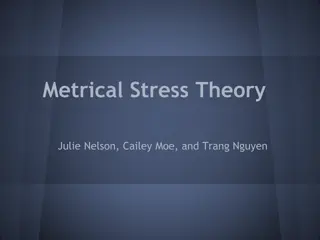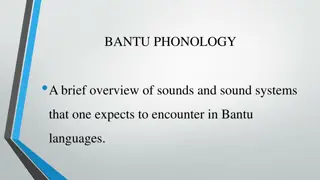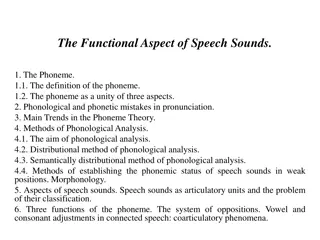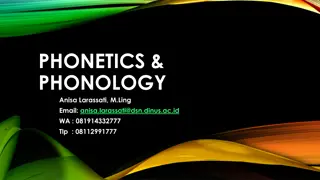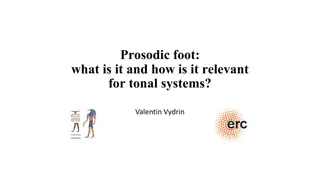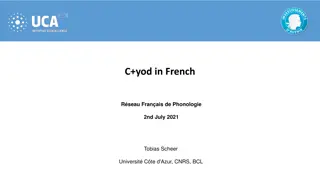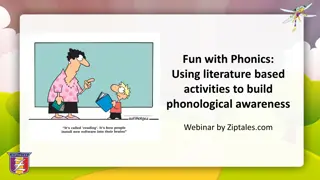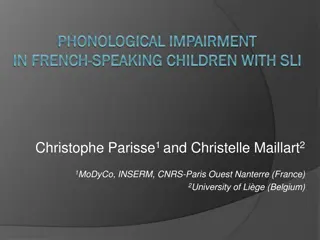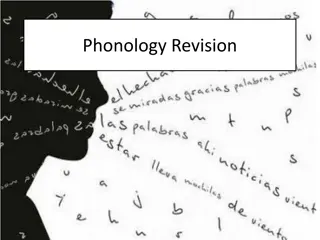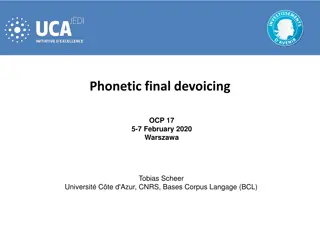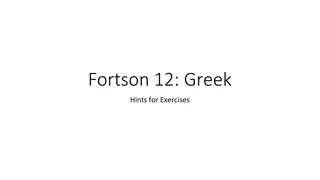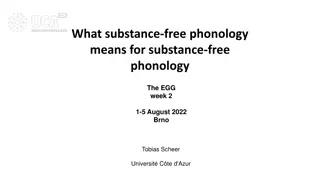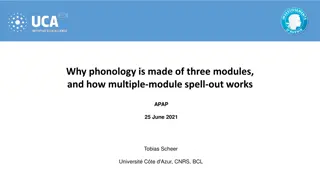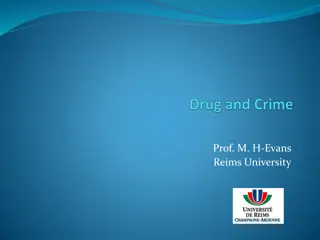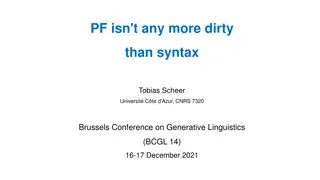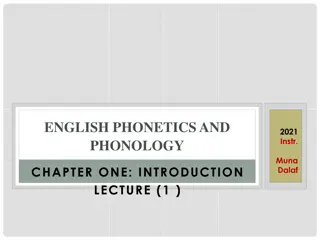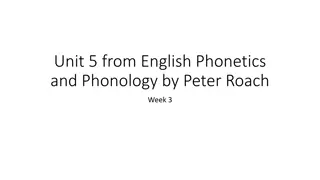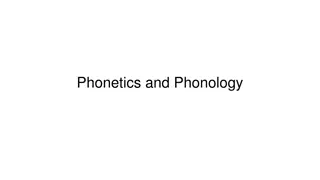Exploration of Substance-Free Phonology and Phonological Theory
This text delves into the concept of substance-free phonology, discussing the arbitrariness of phonological items, the distinction between phonologically meaningful and meaningless items, and the relationship between phonology and phonetics. It also explores the role of sonority in phonological theory and debates the innateness of associations in phonology. Various theories and perspectives on phonology are examined, shedding light on the complexities of language structure and representation.
Download Presentation

Please find below an Image/Link to download the presentation.
The content on the website is provided AS IS for your information and personal use only. It may not be sold, licensed, or shared on other websites without obtaining consent from the author.If you encounter any issues during the download, it is possible that the publisher has removed the file from their server.
You are allowed to download the files provided on this website for personal or commercial use, subject to the condition that they are used lawfully. All files are the property of their respective owners.
The content on the website is provided AS IS for your information and personal use only. It may not be sold, licensed, or shared on other websites without obtaining consent from the author.
E N D
Presentation Transcript
The stepchild of Substance-Free Phonology SFP^2 12 June 2021 Tobias Scheer Universit C te d'Azur, CNRS, BCL
arbitrariness arbitrariness may be used as a guide through the phonological jungle things that are arbitrary are substance-free things that are not arbitrary are not arbitrariness = items are interchangeable mapping: anything on one end (phonology) may be related to anything on the other end (phonetics) Concordia: no everybody else: yes of phonological items (alphas, betas) every SFPist takes a yes for granted, but computation of phonological items
phonologically meaningful vs. meaningless items production phonology | R | N | x | | R | N | x | | Son Phon I: items 1. are not interchangeable = meaningful 2. hence non-arbitrary 3. have no phonetic correlate but not about that O | x | | C | x | O | x | | Phon II: items 1. are interchangeable = meaningless 2. hence arbitrary 3. have a phonetic correlate Place, Lar SFPists talk about this Spell-out of Phon II items [a] [b] [c] [d] [e] Phonetics
bringing the stepchild back in Clements, George 2009. Does sonority have a phonetic basis? Contemporary views on architecture and representations in phonological theory, edited by Eric Raimy & Charles Cairns, 165- 175. Cambridge, Mass.: MIT Press. Son is different computation is not arbitrary: no crazy Son rules items are not arbitrary: not interchangeable mapping is not arbitrary: phonetic vowels are always in nuclei look at the latter issue, never brought up because it seems trivial: how does the child know that vowels go into nuclei, and consonants into onsets/codas? why are there no flip-flop systems where phonetic vowels are in onsets/codas and phonetic consonants in nuclei?
the Concordia debate phonology mapping phonetics [x] [y] [z] in absence of the stepchild items innate? yes no associations innate? yes no Concordia everybody else
the Concordia debate phonology mapping phonetics [x] [y] [z] considering the stepchild items innate? yes no associations innate? yes no Son (Concordia) Place, Lar (everybody else)
Ohala, John 1992. Alternatives to the sonority hierarchy for explaining segmental sequential constraints. Papers from the Parasession on the Syllable, Chicago Linguistic Society, 319-338. Chicago: Chicago Linguistic Society. Harris, John 2006. The phonology of being understood: further argments against sonority. Lingua 116: 1483-1494. Stilp, Christian E. & Keith R. Kluender 2010. Cochlea-scaled entropy, not consonants, vowels, or time, best predicts speech intelligibility. PNAS 107: 12387-12392. what kind of animal is Son? Son is composite: loudness, energy and intensity "sonority does not map to any unitary physical property but is rather a cover term for a collection of independent acoustic properties that contribute to an overall dimension of perceptibility or auditory- perceptual salience." Harris (2006: 1486), also Ohala (1992: 325) entropy counts modulations (modifications of the signal) count, rather than static values. Harris (2006), Ohala (1992: 325)
Sandler, Wendy 1993. A sonority cycle in American Sign Language. Phonology 10: 243-279. Hulst, Harry van der 1995. Head- dependency relations in the representation of signs. Sign language research 1994. Proceedings of the 4th European congress on Sign language research, edited by H. Bos & T. Schermer, 11-38. Hamburg: Signum Press. Sandler, Wendy & Diane Lillo-Martin 2006. Sign Language and Linguistic Universals. Cambridge: CUP. phonology is made of 3 modules Scheer, Tobias forth. 3xPhonology. To appear in the Canadian Journal of Linguistics. vocal: Son, Place, Lar children know at birth that they exist (definition of a Fodorian domain) Son items and mappings are given at birth Place & Lar items and mappings are not, they emerge from the environment signed: movement, location, handshape movement = Son "some kind of movement is necessary for a well-formed sign, just as a vowel, or, in its absence, some other sonorous element, is necessary for a well-formed syllable in spoken language. It has also been noted that movement is perceptually salient, just as vowels are perceptually salient in spoken language" (Sandler 1993: 253). Son in the vocal and movement in the signed modality may be instantiations of the same module whose modality-unspecific domain is perceptual salience.
vocal and signed modality phonological modules must be modality-unspecific therefore innate associations to vocal phonetic categories don't qualify
modularity & the Concordia debate there are a number of pathways to SFP, mine is modularity. if the upper interface has intermodular communication through a lexicon, that must also be the case for the lower interface lexicon means arbitrariness - in our case phonetic arbitrariness: anything on one end (phonology) may be related to anything on the other end (phonetics). therefore the phonology-phonetics mapping cannot be innate: lexica are arbitrary learned
